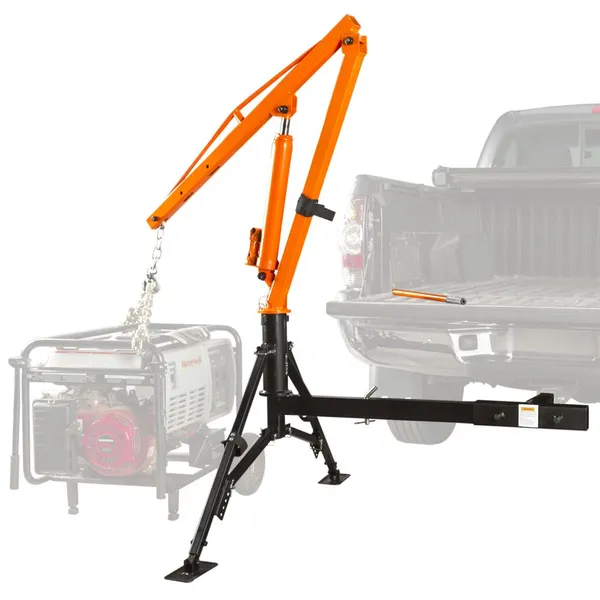Hi folks,
I'm in need of a hitch hoist with the following spec's:
reach > 4 ft.
height > 8 ft.
weight > 500 lb + 2x safety margin (i.e. 1000 lb.)
vertical travel > 3 ft.
This is for lifting a racing boat off the trailer to remove and re-install a bottom cover used for trailering delicate hulls. Boat race weight is 515 lb., but due to the potential for both damage and injury, I'd want at least 2x safety margin on that. Single point lift, using a bridle that is kept with each boat.
Desiring something light (pref. aluminum) with a boat trailer winch for vertical lift, preferred over hydraulic piston type. I haven't found anything meeting these spec's, they all seem too small or way too heavy, nothing in this somewhat in-between space. Aiming for something that will fit standard 2" hitch, such that we can place this hoist on the truck, wheel the boat trailer into place, hoist, (un-)cover, and set the boat back onto the trailer.
I will build if necessary, and can both run basic structural calc's and simulation (thru SolidWorks / CST), but will want to run my design past a real structural engineer for a sanity check. Would prefer to buy, if one can be found at reasonable price.
Thanks!
I'm in need of a hitch hoist with the following spec's:
reach > 4 ft.
height > 8 ft.
weight > 500 lb + 2x safety margin (i.e. 1000 lb.)
vertical travel > 3 ft.
This is for lifting a racing boat off the trailer to remove and re-install a bottom cover used for trailering delicate hulls. Boat race weight is 515 lb., but due to the potential for both damage and injury, I'd want at least 2x safety margin on that. Single point lift, using a bridle that is kept with each boat.
Desiring something light (pref. aluminum) with a boat trailer winch for vertical lift, preferred over hydraulic piston type. I haven't found anything meeting these spec's, they all seem too small or way too heavy, nothing in this somewhat in-between space. Aiming for something that will fit standard 2" hitch, such that we can place this hoist on the truck, wheel the boat trailer into place, hoist, (un-)cover, and set the boat back onto the trailer.
I will build if necessary, and can both run basic structural calc's and simulation (thru SolidWorks / CST), but will want to run my design past a real structural engineer for a sanity check. Would prefer to buy, if one can be found at reasonable price.
Thanks!


![[Hearth.com] Heavy hitch hoist [Hearth.com] Heavy hitch hoist](https://www.hearth.com/talk/data/attachments/296/296207-c9d07aacc54236f5217d5bc713cd22b6.jpg?hash=uMCUyX5_fC)


![[Hearth.com] Heavy hitch hoist [Hearth.com] Heavy hitch hoist](https://www.hearth.com/talk/data/attachments/296/296256-f166cbb1c9f5496a3dcbe7a1900789ef.jpg?hash=gaGMQsxM6_)
![[Hearth.com] Heavy hitch hoist [Hearth.com] Heavy hitch hoist](https://www.hearth.com/talk/data/attachments/296/296257-1c5bdd3ea84ae135258692703edaa03c.jpg?hash=xHGtVHw1Rs)
